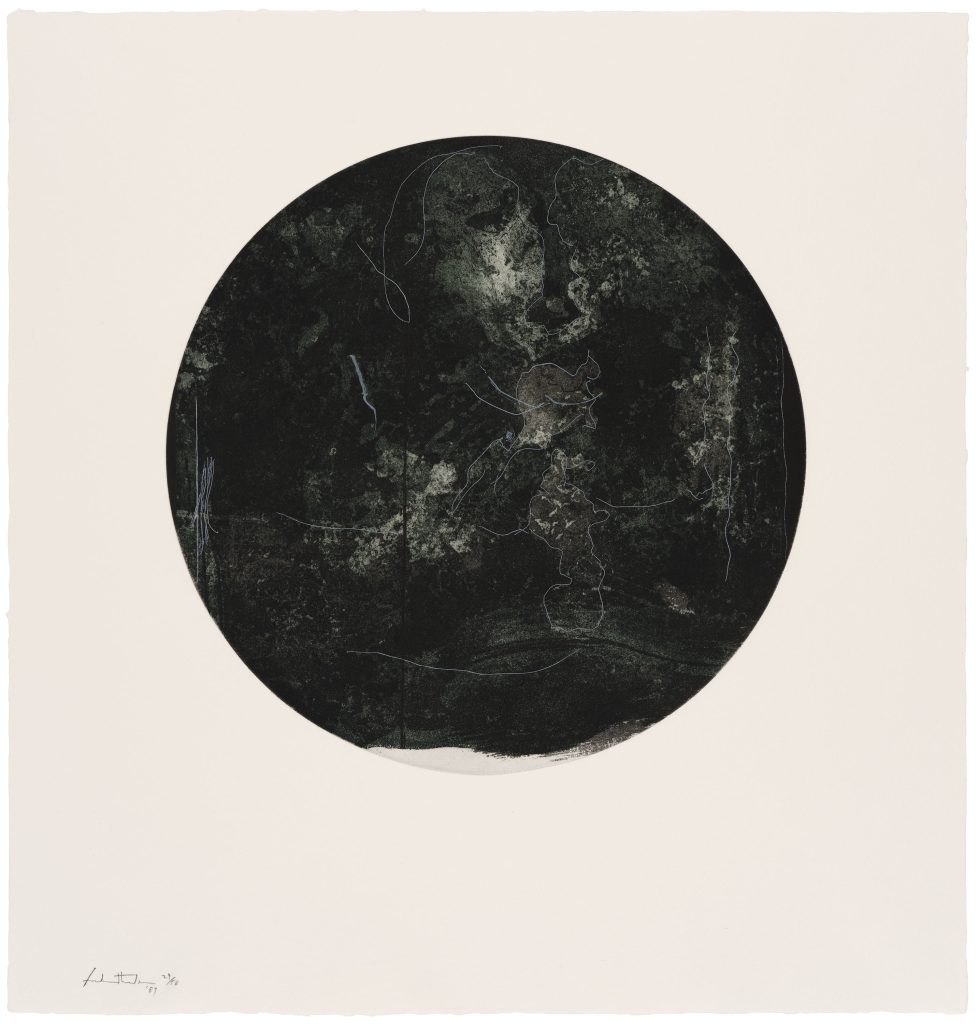Push & Pull: “Day One” – Student Sound Piece

Helen Frankenthaler (1928 – 2011), Day One, 1987. Edition 29/58. Four color aquatint, sugar-lift etching, etching, and drypoint on white HMP handmade paper 24 1/2 x 24 1/2 inches (62.2 x 62.2 cm). © 2025 Helen Frankenthaler Foundation, Inc. / Artists Rights Society (ARS), New York / Tyler Graphics Ltd., Mount Kisco, New York. Photograph by Thomas Barratt, courtesy Helen Frankenthaler Foundation, New York.
Drawing on the UNM Art Museum’s permanent collection, Push & Pull: The Prints of Helen Frankenthaler and Her Contemporaries celebrates abstraction in all print processes.
Learn more about Helen Frankenthaler’s Day One by listening to the following sound piece created and recorded by Brianna Tadeo, a UNM MFA student in Photography.
TRANSCRIPT:
Helen Frankenthaler’s Day One, published by Tyler Graphics in 1987, was an edition of 58. Frankenthaler collaborated with printers Bob Cross and Rodney Konopaki, who used techniques such as color aquatint, sugar lift etching, etching, and drypoint.
Color Aquatint is a printmaking technique that facilitates the creation of multi-colored images by layering different inks on a single plate. This method builds upon the traditional aquatint process, which employs powdered resin to generate tonal variations, while integrating various colors to enhance depth and visual interest in the final print. Color aquatint allows the printers to achieve a broad spectrum of hues and textures, making it a versatile addition to the printmaker’s toolkit.
*Swarl of the sugar-lift painting it onto the plate*
Sugar-lift is a printmaking technique similar to etching. Printmakers mix water, sugar, and black gouache paint, applying it to copper or zinc plates. After drying, a wax compound called ‘Hard Ground’ is rolled over the plate and allowed to dry. Once dry, the plate is then submerged in warm water, which dissolves the sugar while the hard ground protects the uncovered areas, revealing the etch.
*Sound of plate dipping into Ferricabth and being washed *
Drypoint is an intaglio printmaking technique where an image is incised into a plate, or matrix, using a hard-pointed needle made of metal or a diamond point. This method is essentially the same as engraving.
*Sound of plate and dry pointing etching*
Etching is a printmaking technique that uses acid to create a design on a metal plate, usually made of copper or zinc. The plate is coated with an acid-resistant ground, and the artist scratches a design into it, exposing the metal underneath. The plate is then immersed in acid, which creates grooves in the exposed areas for printing.
*Plate going through the press*
When looking at Day One, can you identify any of these techniques? Can you see the Drypoint lines, the texture of the Aquatints, and the Sugar-lift in the rich blacks and gray shades?
